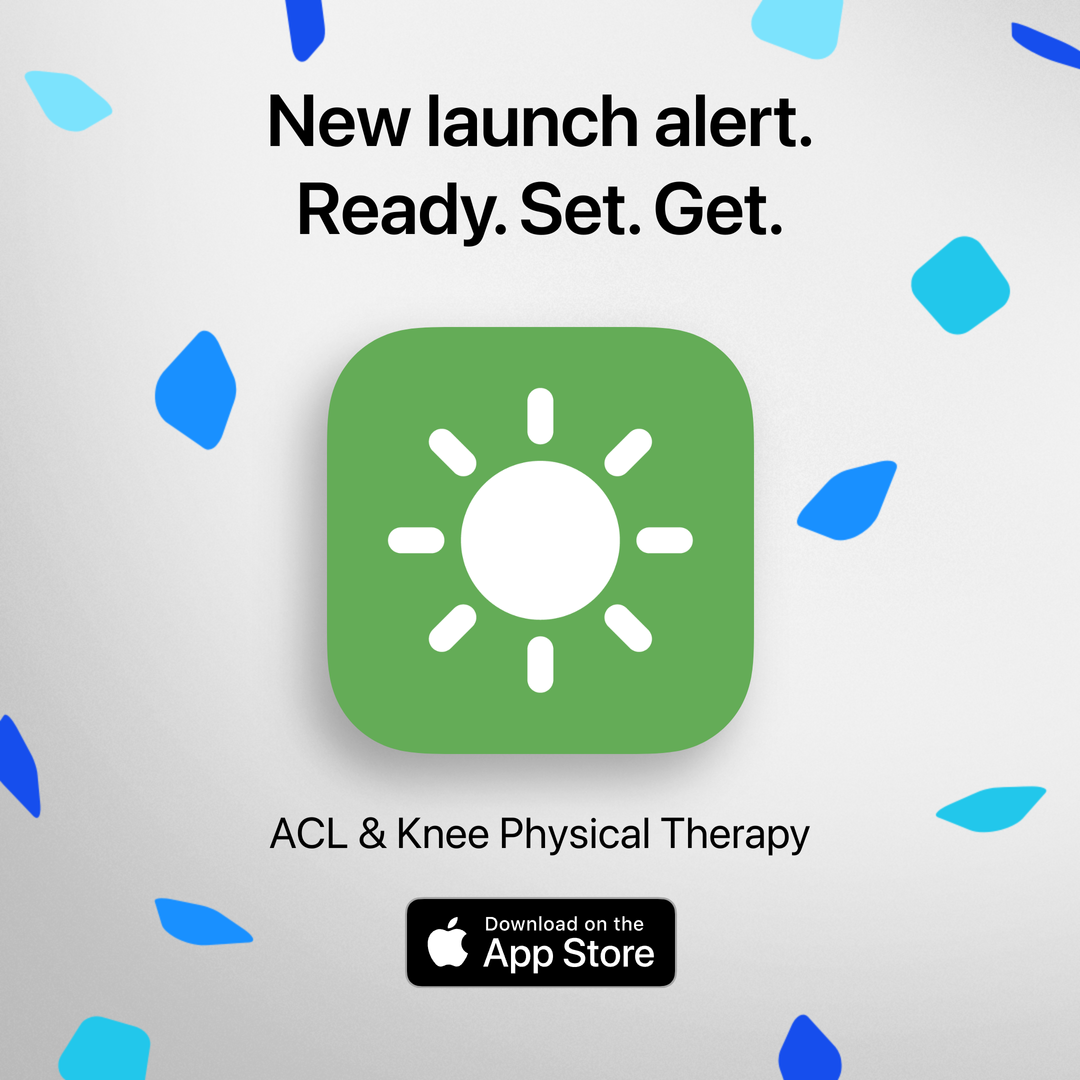In part one of the KOOS blog, we explained what patient reported outcome measures or PROMs are. We also described what the Knee Injury and Osteoarthritis Score or KOOS is, what it measures, what it tells you about your knee and why you should fill it out. One of the reasons why it is valuable to complete the KOOS is because you can compare your own KOOS scores to other people who have had a similar injury or surgery. Through this comparison, it can help you determine your level of function, progress and impairment at a particular point in time. In this blog, we will discuss what normal values or normative values are in general as well as normative values for the KOOS. This blog will also allow you to make sense of your own KOOS score so that you can compare your progress and understand what is normal progress for your specific injury or surgery. The KOOS has been used with people after ACL injury, and after ACL surgery, before and after a total knee replacement, knee osteoarthritis and various other knee injuries.
What are normal or normative values? How are normative KOOS values obtained and what does my KOOS score mean?
Imagine you are looking to try a new restaurant and have recommendations from two friends, Tom and Sally. Sally is similar in age to you and both of you share similar interests and tastes. In contrast, Tom is a few years older and has very different interests and tastes from you. With this in mind, which recommendation would you feel more inclined to pursue? You would likely feel more confident taking up Sally’s recommendation since you share more similarities to her than to Tom. Your ability to relate better to Sally because of your similarities is essentially the premise for normative data.
Normative data identifies what is usual or typical and describes observed characteristics of a specific population at a particular point in time.[1] They are obtained through testing a smaller group of individuals within a given population which is called a normative sample.[2] For example, the Scholastic Aptitude Test or SAT is a standardized test that measures academic potential and is taken by high school students throughout the United States each year. In this case, the reference population is American high school students and the normative value is based on the scores of the normative sample which in this case would be a randomly chosen group of American high school students who accurately represent the diversity of all high school students in the US. Hence, the scores of the normative sample would be used to determine normal values or average scores.
Because “normal” is relative and differs between groups, this makes it difficult to interpret test results. The use of normative values and normative samples allow for interpretations of test scores in a way that is meaningful and relevant for specific populations. Similarly to how Sally’s restaurant recommendation would be more relevant to you than Tom’s, normative values allow you to make sense of your test scores by providing you with data based off of people who share similar characteristics to you.
Normative values for the KOOS
To recap my previous blog, the knee injury and osteoarthritis outcome score (KOOS) is a questionnaire designed specifically for people of various knee conditions.[3] Completing the KOOS provides insight into the course of your knee injury and allows you and your healthcare provider to track the effects of treatment over time.[3] While comparing your own preoperative and postoperative KOOS scores provides insight into your recovery process, you can also compare your scores to normative KOOS vales to determine your level of impairment or your level of progress compared to people who have undergone a similar injury, surgery and/or treatment. In this blog, normal KOOS scores for populations who have sustained an ACL injury, undergone ACL surgery, total knee replacement (TKR) surgery as well as those who have knee osteoarthritis and populations with no known knee ailments will be discussed below:
When reading the tables below keep in mind that a KOOS score of:
0 = extreme problems and this is bad
100 = no problems and this is good
Pn = pain, Sx = surgery, ADL = activities of daily living, SR = sport and recreation, QOL = qulaity of life
| Diagnosis | Age | # People | Pn | Sx | ADL | SR | QOL |
|---|---|---|---|---|---|---|---|
| ACL injury pre-op[11] | 29.9 (range 28.9-30.9) | 542 | 72.4 | 71.1 | 81.7 | 40.2 | 33.9 |
| ACL 3 months post-op[4] | 32 (range 18-46) | 18 | 86.9 | 76.3 | 93.7 | 58.7 | 54.2 |
| ACL 6 months post-op[4] | 32 (range 18-46) | 19 | 89.9 | 87.1 | 96.5 | 70.8 | 58.9 |
| ACL 1 year post-op[8] | 16-20 (34%) 21-30 (31%) 31-40 (20%) 41+ (15%) |
7119 | 85 | 77.9 | 91.8 | 65.3 | 60.5 |
| ACL 2 years post-op[8] | 16-20 (34%) 21-30 (31%) 31-40 (20%) 41+ (15%) |
7119 | 84.8 | 78.5 | 91.4 | 65.6 | 61.4 |
| Knee replacement pre-op[9] | 71.3 (range 43-86) | 105 | 39 | 46 | 43 | 17 | 25 |
| Knee replacement 6 months post-op[9] | 71.3 (range 43-86) | 97 | 79 | 72 | 77 | 48 | 59 |
| Knee replacement 1 year post-op[9] | 71.3 (range 43-86) | 90 | 83 | 84 | 82 | 46 | 69 |
| Knee replacement 5 years post-op[7][10] | 76 (range 59-90) | 80 | 79 | NR | 73 | 52 | NR |
| Knee osteoarthritis min pain 3/10 [13] | NR | 190 | 47.6 | 47.3 | 49.3 | 27.9 | 30 |
| No injury, college athletic men[12] | 18.8 (range 17.9-19.7) | 832 | 97.5 | 94 | 98.9 | 94.8 | 92.6 |
| No injury, college athletic women[12] | 18.7 (range 17.9-19.5) | 173 | 95.6 | 92.6 | 97.8 | 92.6 | 90.2 |
The table below provides normal values for KOOS by age range based on a representative sample of the Denmark population. A total of 2842 people completed the KOOS of which 51% were women and 49% were men. The values below are the average KOOS score for each age group also called the mean score.
The information in this table below was obtained from the following research article: Knee injury and osteoarthritis outcome score (KOOS) – National record-based reference values.[14]
| Age | range | # People | Pn | Sx | ADL | SR | QOL |
|---|---|---|---|---|---|---|---|
| 18-29 | 152 | 85.6 | 82 | 91.3 | 77.8 | 76.9 | 76.9 |
| 30-39 | 217 | 89.4 | 86.3 | 93 | 81.2 | 80.8 | 80.8 |
| 40-49 | 348 | 87.2 | 85.5 | 90.4 | 77.7 | 78.5 | 78.5 |
| 50-59 | 469 | 84.2 | 83.7 | 85.9 | 71.1 | 73.8 | 73.8 |
| 60-69 | 631 | 83.3 | 83.6 | 84.8 | 66.5 | 71.2 | 71.2 |
| 70-79 | 624 | 84.8 | 85.9 | 85 | 67.7 | 73.8 | 73.8 |
| 80+ | 358 | 86.5 | 88.8 | 84.2 | 68.1 | 76 | 76 |
Conclusion
Normative values outline what is considered normal or typical within a specific population.[1] By having normative data available, it allows you to make sense of your test scores by comparing your score to scores of individuals with similar characteristics as you.[2] For example, if you are recovering from an ACL surgery and have a KOOS pain score of 72, depending on how long it has been since your surgery, you can determine if the level of pain you are experiencing is similar to other people who have also had ACL surguries. Notice that the pain scores differ depending on the length of time it has been since the ACL surgery. For instance, a pain score of 72 after ACL injury and before surgery is normal but it is much worse if you score 72 six months after ACL surgery when the normal score is 89.9. Remember that a higer KOOS score is better or indicated less knee issues and a lower KOOS score indcated more knee issues.
Now that you have learned about normative values and how to interpret your KOOS score relative to other people who have similar characteritics, injuries and surguries, you may be wondering how to interpret the difference between your pre-operative and post-operative KOOS scores. Stay tuned for part 3 of the KOOS blog series to learn about minimal detectable change and to learn when the difference between your pre and post oeprative scores is meaningful.
If you have had a knee injury or surgery try our app Curovate for your daily recovery. Curovate provides video-guided daily exercises, progress tracking, the ability to measure your knee and hip range of motion and the ability to complete the KOOS outcome measure all within the app.
If you need further customized assistance during your surgery or injury recovery check out our Virtual Physical Therapy page to book your 1-on-1 video session with a physical therapist.










